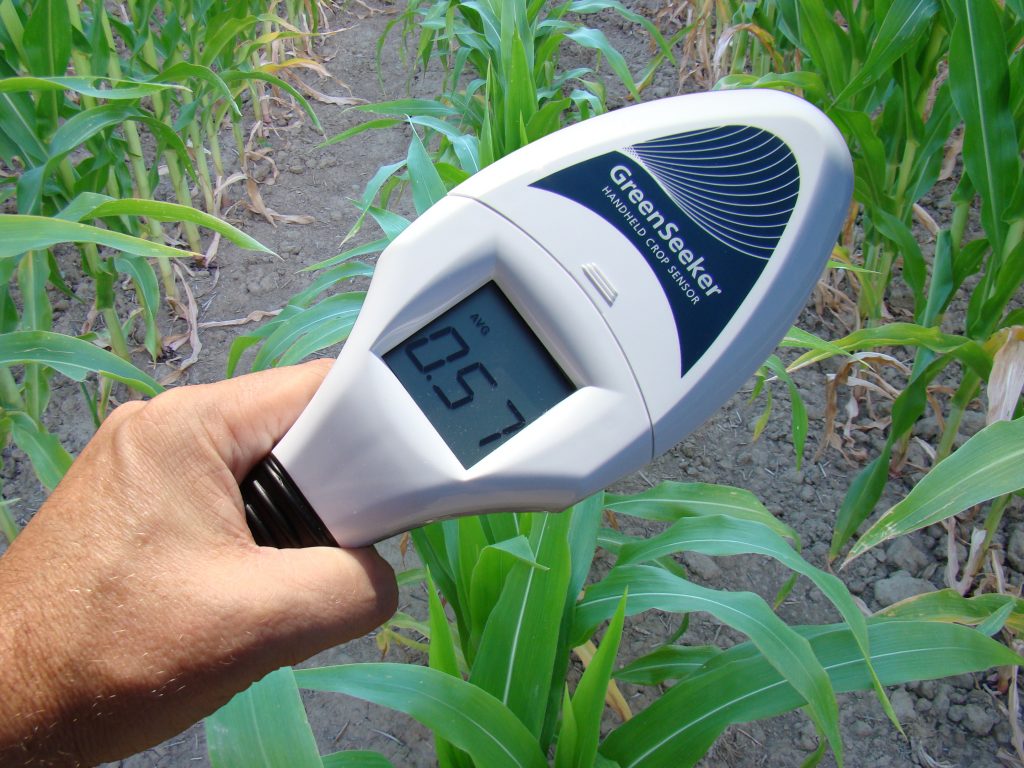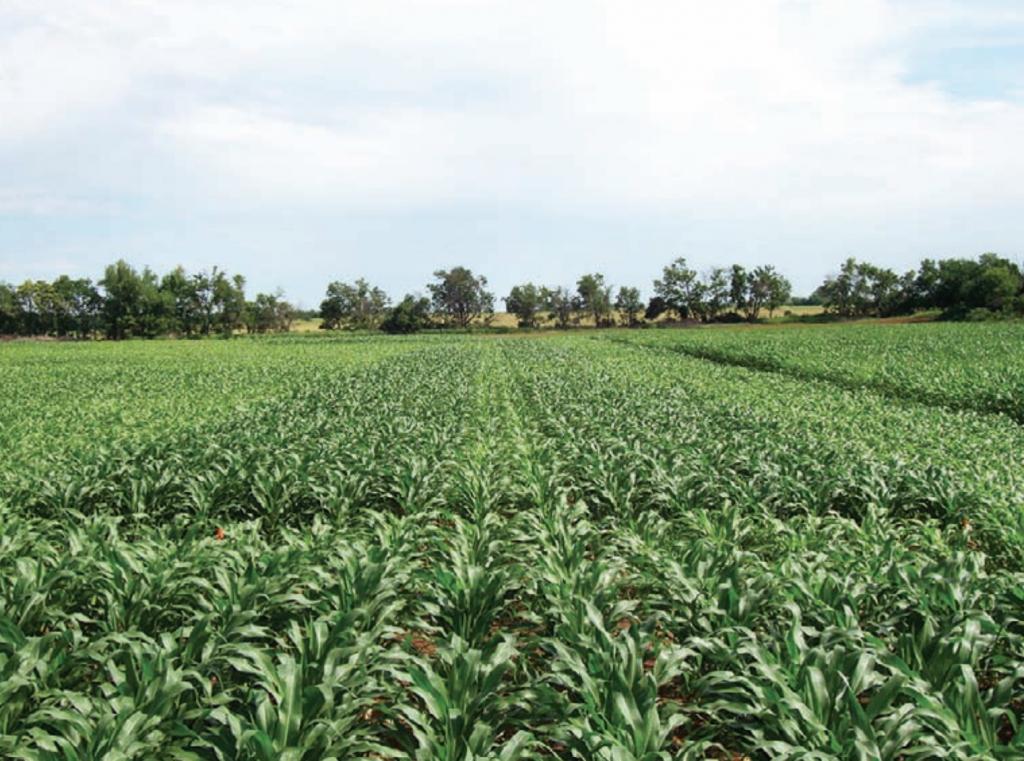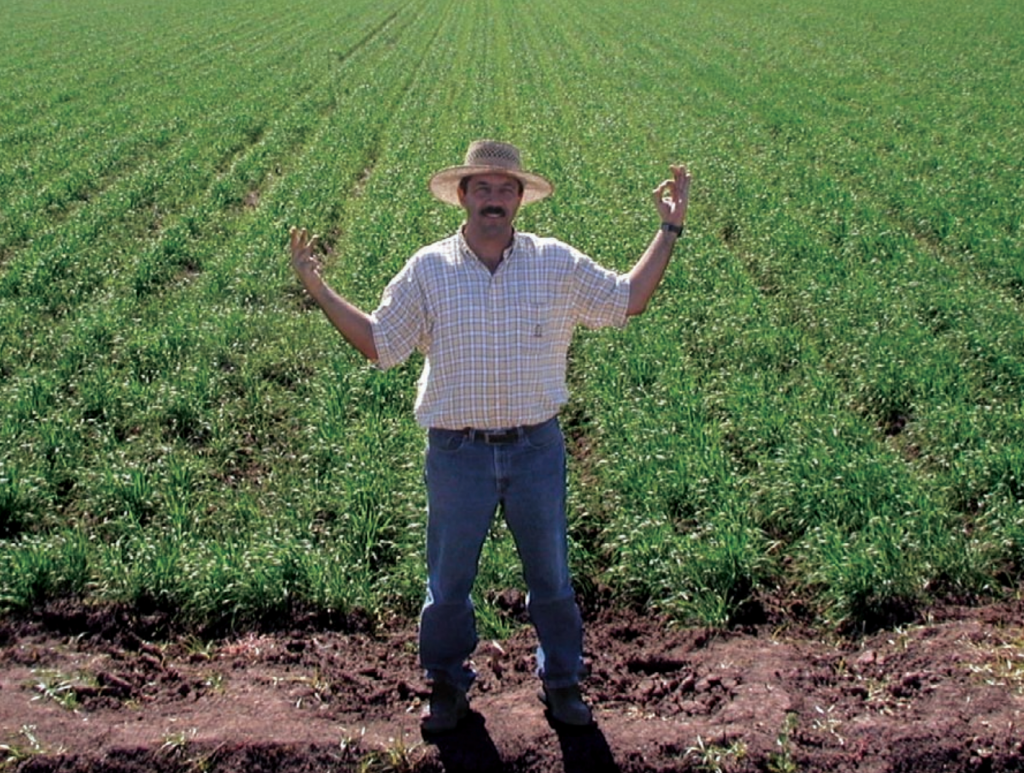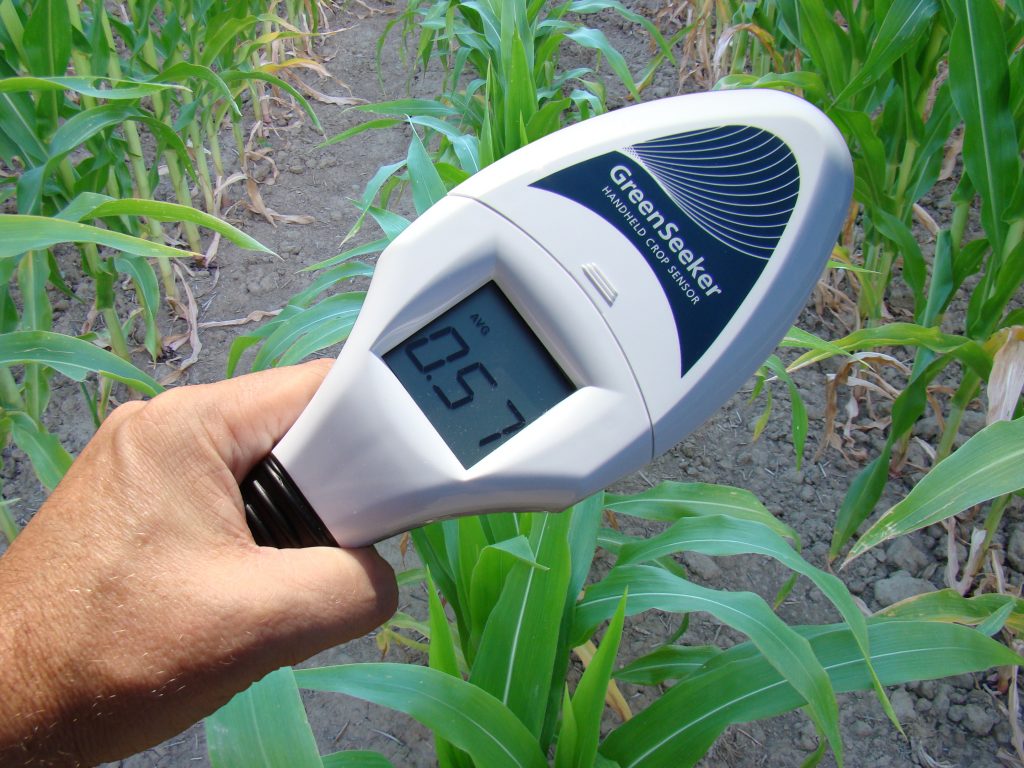How to Use Reference Strips for Better Nitrogen Management
July 20, 2018

How much money could you be saving per acre by using reference strips? How much money are you wasting today? A simple change in your farming practices could make a major impact on your bottom line, and those farming practices all come down to better nitrogen management.
There have been many advancements made in the farming industry around nitrogen management. Variable rate application maps, for example, help identify zones within a field where soil should be managed differently. Largely, though, the way we manage nitrogen today isn’t that different from what our great-great-grandfathers were doing. Farmers go out year after year and apply nitrogen at a flat rate to their field, regardless of the actual needs of the soil. This is done with an “I’d rather be safe than sorry” mentality with many farmers believing that the additional nutrients will lead to a healthier plant. The reality though, is that there is a diminishing return on over-applying nitrogen when it comes to cost and too much nitrogen can actually damage your crop’s potential in some cases.
The Ebb and Flow of Nitrogen Mineralization
Every year, the amount of nitrogen naturally available in the soil, anywhere in the world, changes. One year, the level of nitrogen might be perfect for cultivating a healthy plant. But the next year, you may have had a lot of rain or other poor climatic situations that have affected the soil and therefore affected the amount of nitrogen mineralization naturally available to your crops. If you apply the same amount of nitrogen in a “good” year as you would in a “bad” year, you might end up with healthy plants in either case but will have wasted a lot of money in the year when nitrogen is already at a healthy level. This is where reference strips can be incredibly valuable, both by saving you money on unnecessary nitrogen input and by giving you useful information to amend nitrogen-poor soil to ensure healthy yields.

What does a reference or nitrogen-rich strip do?
The theory and practice behind reference strips has been cited for years by agronomy experts at Oklahoma State University among others and involves the implementation of a nitrogen-rich strip in your field to be used as a point of comparison for the rest of your field.
As an example of how this might work: if you were to add 20% more nitrogen than whatever your typical flat rate is to one strip, you’ll be able to measure and calibrate the optimal nitrogen input amount for the rest of your field based on the performance of that strip.
What will your reference strip tell you?
Nitrogen Deficient Soil: In a year where the soil is lacking in nitrogen, you can expect to see healthier plants than the rest of the field because you applied extra nitrogen that your plants needed and were able to use.
Nitrogen Healthy Soil: In a year where there is enough nitrogen in the soil naturally, you can expect to see little difference between your nitrogen-rich strip and the rest of your field because there was already enough nitrogen in the soil, it didn’t need your extra 20%.
Once you have analyzed the results of your nitrogen-rich strip, you can then use it as a calibration point. Your eyes can only see so much on their own, by using Greenseeker with its smart sensor to scan the nitrogen-rich strip and then scan the rest of the field you’ll have the information you need to make nitrogen input decisions for your entire field.
How does Greenseeker work?
Greenseeker is able to determine the optimal amount of nitrogen to apply to different areas of your field, based on information you enter about your crop type and application rate. The sensor will then be able to determine when, where and in what amounts nitrogen should be applied to your fields to produce the best yield. When using a complete Greenseeker system with a guidance display, not only can it determine when, where and how much nitrogen should be applied but it can also generate an after-the-fact report of the exactly how much was applied and where. Giving you the ability to find locations which may need further attention and to track nitrogen needs year-over-year.
Technology has the ability to see what your eyes can’t and will be able to read the difference in nitrogen levels from your reference strip to the rest of your field.

This grower applied three times the amount of nitrogen to the area on the left than he did to the area on the right. Can you see a difference? Neither could he. As a result, he wasted money adding more nitrogen than he needed to his field that already had healthy levels of nitrogen.
How Start Using Reference Strips
Using reference strips can save you time, money and give you peace mind. But how do you make this change on your farm?
1. Education:
The better you can understand how, when and why to use reference strips, the more value you will get from implementing this process. There are a number of helpful resources in the agriculture community like the agronomy experts at Oklahoma State University who have a lot of information about implementing and getting the most out of the practice on your farm
• Resource: Oklahoma State University Department of Plant and Soil Sciences, Reference Strip Information
2. Planning:
Using nitrogen-rich strips correctly comes down to careful and diligent planning. While the actual practice is a simple one, timing matters. You’ll want to get your test strip identified in your field, have the 20% extra nitrogen applied and be able to test results as soon as possible so that you can apply appropriate levels of nitrogen to the rest of your soil in time for your crops to reap the most benefit.
• Resource: Oklahoma State University Nitrogen-Rich Strips Guide
3. Data Analysis:
While Greenseeker can help you determine how much nitrogen is needed in different areas of your field, it offers benefits that go beyond that. By collecting data to help you organize and record your nitrogen use year-over-year, Greenseeker provides information that can help you make smarter farming decisions that will save you money over time and make your practices more efficient.
• Resource: Oklahoma State University Sensor-Based Nitrogen Rate Calculator
Farmers that implement the use of reference strips into their farm are often surprised by how easy the process is, especially in relation to the payoff. The return on investment is easy to see the first year that you have a soil-healthy field that you would have otherwise unnecessarily treated with nitrogen. Knowing, instead of guessing, that your soil has the right amount of nitrogen for your crops allows you to get your crop planted and confidently move onto the other needs of our farm.
Whether you’re a local crop consultant looking for a tool to help you do a quick diagnostic test while in a client’s field or you’re a cash-crop producer that wants to better manage your nitrogen application to save money and get the most from your fields, a tool like Greenseeker is a must-have on any precision agriculture farm.
Learn more about GreenSeeker and Trimble’s complete line of Variable Rate Application and Flow Control Solutions
About the Author: Daniel Rodriguez is a Product Manager for Trimble and manages the development of solutions worldwide. With 18 years of experience, specializing in crop sensor application systems, he aims to help farmers introduce innovative solutions into their fields, focused on helping increase yields and be more efficient with input management.

